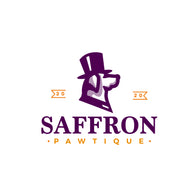
Operant Conditioning to Train My Dog
Through learning about dog training at classes by Anglian Dog Works we came across the term Operant Conditioning. But what did it really mean? Well, we did a little research and have put the following together.
We love it if you could read through the blog and share your experience of Operant Conditioning.
What is Operant Conditioning?
Operant Conditioning is a theory of learning that explains how we learn through the consequences of our behaviour. This means any behaviour we express has a consequence, that consequence will then influence if we carry out this behaviour again. These consequences can be through reinforcement or punishment; this can also be either positively or negatively carried out. That means there are four consequences that attribute to our learnt behaviour: positive reinforcement, negative reinforcement, positive punishment and negative punishment.
What's the proof?
A study was conducted by B.F. Skinner, 1948, where he trained rats to press a lever through reinforcement. There was a box set up in which every time the rat pressed a lever it received a food reward. It was found that rewarding the lever pressing behaviour increased the chance of the rat pressing the lever. This showed that learning was affected by reinforcement.
In addition to this, a study by Deldalle and Gaunet, 2014, highlighted the comparisons between positive reinforcement and negative reinforcement. The results showed a correlation in negative reinforcement and the less likely the dog would look at the owner/handler they also showed higher levels of behaviour showing stress, like licking.
Four Sections of Operant Conditioning.

Operant conditioning is broken down into: positive reinforcement, negative reinforcement, positive punishment and negative punishment. Reinforcers increase the likelihood of the behaviour reoccurring. Punishment decreases the likelihood of the behaviour being repeated. If carried out in a positive way this means something is added into the situation where if it is negatively carried out this means that something is removed from the situation.
For Example:
Positive Reinforcement - giving your dog a treat for doing the correct behaviour, e.g. give a treat when your dog sits after the cue 'sit'.
Negative Reinforcement - If your dog is scared of people in hats you would take the person in a hat out of the environment when your dog offers a desired behaviour.
Positive Punishment - If your dog pulls on the lead this is you hitting the lead on the dog's back as it pulls, with the hope that it decreases the pulling.
Negative Punishment - If your dog is pulling you just stop walking until they stop pulling. Therefore removing the good thing - walking - to decrease the pulling behaviour.
Why should I use Operant Conditioning with my Dog?
Using operant conditioning does not mean using all aspects of it. It is found that positive reinforcement has better results with long-term learning and mental state of learning. This means your dog would have a happier lifestyle if the training is based predominately with positive reinforcement. Guidance with this can be found from a dog trainer, especially one with IMDT qualifications.
How can I use Operant Conditioning with my Dog?
Positive reinforcement is the adding of something into the environment as a reward, such as a treat. Therefore we would use this when your dog is giving a behaviour that you want. The association of being rewarded each time a good behaviour is shown would back up to the dog that the behaviour they are demonstrating is a good behaviour to keep doing. Who wouldn’t keep doing something that gets them sweeties? Therefore this behaviour is likely to continue throughout the dog’s life.
What do I Need for Positive Reinforcement?
Always be aware of the trainers you have around you. Just reading books/blogs and talking to friends may not answer all your questions. There is a lot riding on your timing and delivery of the reward too. Look for a trainer using positive reinforcement methods to assist you as and when needed.
In terms of having something to reward the dog with, it depends on what your dog enjoys the most. Are they a lover of treats, toys or even praise? Find out they’re preference and use those. There are a range of natural treats and eco-friendly toys here at Saffron Pawtique that you may find useful.
